
views
Getting Yourself Unstuck

Remain calm. The most important thing you can do is to stay calm. If you’re alone, this can be hard to do, but give yourself a moment to take a few deep breaths and relax. Try to avoid panicking when you realize you’re unable to move away from the frozen surface. If you pull too hard on your tongue, it will literally rip off the frozen surface and cause a lot of damage (and bleeding). Consider this a last resort option. If you see someone in the general area, try to flag them down by waving your arms or yelling (as best you can). Having someone else to help you will ease your stress.

Cup your hands around your mouth to heat up the surface. Since you’re alone, try this method first. The reason why your tongue is stuck is because the metal surface is frozen and is conducting the heat from your tongue. In order to get unstuck, you have to warm up the metal somehow. One way to warm up the metal surface is to use your own hot breath. Cup your hands around your mouth (but be careful not to touch your lips or hands to the metal surface, as they will collect moisture and also become stuck) and breathe hot air directly onto the area where your tongue is stuck. You can also use a scarf or jacket to shield yourself from a cold wind and possibly help warm air from your breath. Pull gently while doing this to see if you can loosen, or even remove, your tongue.
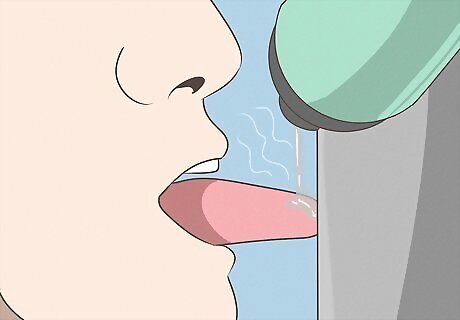
Pour warm liquid onto the surface. If, by some chance, you have a warm cup of coffee, tea, hot chocolate, or other liquid with you, use it to warm up the metal’s surface. Pour the liquid onto the metal where your tongue is stuck and gently attempt to remove your tongue. Warm water is ideal for this situation, but any warm liquid will work if necessary. And yes, that includes urine. Although not recommended, if you are alone somewhere and no help is possible, this could be your absolute last resort. Consider this only under absolute emergency situations.

Call 911. Calling 911 to get help is definitely an option you should consider. Of course, this would only work if you have a cell phone with you, and that cell phone is easily accessible to you. When, and if, you call 911 you may be unable to talk to the operator. Remain calm and slowly try to explain what has happened and where you are. If necessary, they can trace your call to find you.
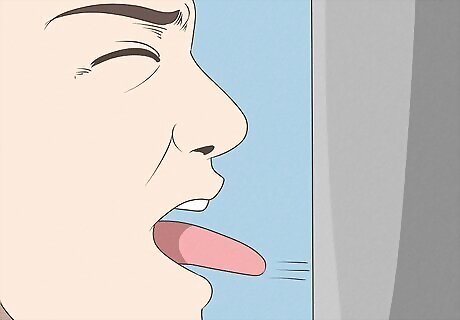
Pull quick and fast. Consider this as an absolute last resort option if all other options have failed or aren’t possible, but it really should never come to this. This option will, without a doubt, cause some sort of injury and be extremely painful. Build up your courage and then just yank yourself away from the frozen surface. Warming the surrounding metal area through breathing and shielding yourself from wind with a scarf or jacket is usually enough to gently remove the appendage, even in -40°F or more. Once you’re unstuck, seek medical help as quickly as possible for your injured tongue.
Helping Someone Else Get Unstuck
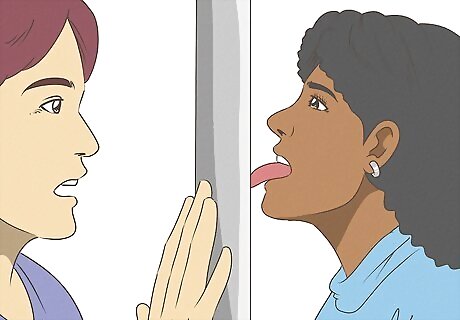
Tell the person to remain calm and not to pull. Wet tongues at body temperature stick to frozen metal surfaces because the metal literally draws the heat out of the tongue. When heat is drawn out of the tongue, saliva becomes frozen and sticks to the metal surface like superglue. In addition, textured taste buds on your tongue strongly grip the metal surface. Due to the intensity with which the tongue sticks to the frozen metal, pulling lightly on the tongue to remove it will not work. Pulling really hard on the tongue will only end up leaving a portion of the tongue stuck to the metal and the person bleeding profusely. If you come across someone who has managed to stick his tongue to a cold metal surface, tell him to try to remain calm and not to pull on his tongue as it will only cause damage.
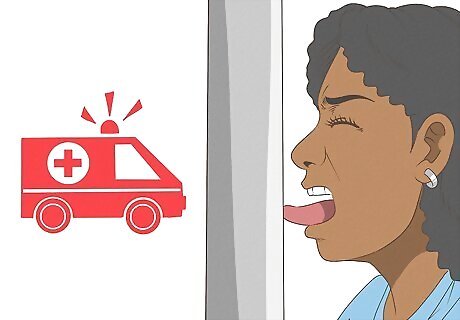
Make sure the person is otherwise okay. Unless you witnessed the person sticking her tongue to the metal surface, you may not know what happened. Check her to make sure she's otherwise okay and not injured in other ways. If she has been hurt or injured in other ways, and those injuries are not minor (e.g. bumps or bruises) you should call 911 immediately.
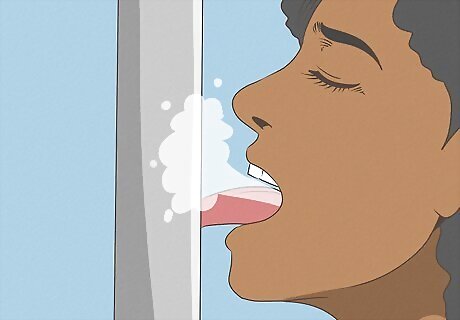
Ask the person to breathe deeply. If you can warm up the metal, the tongue may naturally become unstuck. On way to attempt this is to ask the person to breathe on the metal as much as possible, while cupping his hands around his mouth to direct the hot air. You can even try to shelter the metal surface to help warm it up and contribute to the hot air being blown onto the surface. Be careful that the stuck person doesn’t also stick his lips or hands to the metal surface, as this will just make the situation worse.
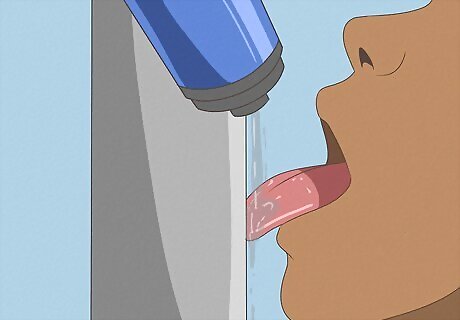
Get some warm water. If you live nearby, or have access to a hot water tap, get a glass or bottle filled with warm (not hot) water. Pour that warm water onto the person’s tongue where it’s stuck to the metal. At this point you can tell the person to slowly pull away from the metal surface to detach her tongue. If you are not able to get warm water, and hot air hasn’t worked, you may have to call 911 for help. The liquid doesn’t necessarily have to be water. If you, or someone else passing by, has a warm cup of coffee, tea, etc., this will work as well. It just might be a little messier.
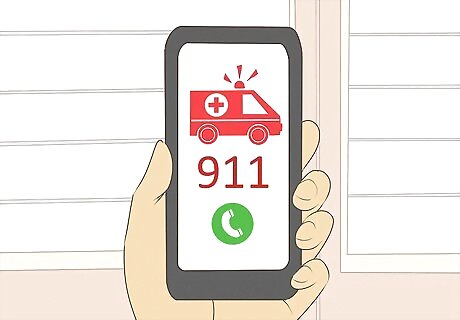
Call 911. Unfortunately, if neither hot air nor warm water works, you’ll have to call 911. If you live in a part of the world that experiences cold every year, emergency responders are likely use to dealing with tongues stuck to frozen metal surfaces.
Treating Tongue Injuries
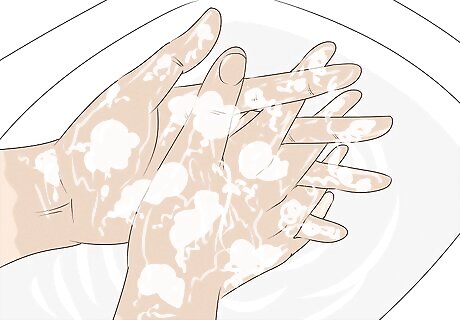
Wash your hands. Since you need to use your hands to stop the bleeding, it’s best if you can clean your hands first. Obviously this will be more difficult if you’re attempting treatment where you were injured. Alternatively, use protective medical gloves if you happened to have some, or they’re accessible nearby. Avoid using your bare hands directly on your tongue to stop the bleeding, if possible.

Sit up with your head tilted forward. You do not want to swallow any blood if possible, as this will just cause you to get nauseous and vomit. Instead, sit up with your head tilted forwards and downwards so the blood will drain out of your mouth. If you had anything in your mouth at the time of the injury, remove it now (e.g. gum). If you have a piercing in or around your mouth, and you can safely remove it, do so.
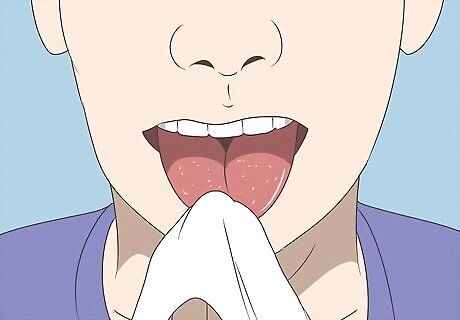
Stop the bleeding. Use a clean cloth, or the cleanest cloth you have available, to apply pressure to your tongue. Only use your bare hands to apply pressure if you have nothing else to use, especially if you weren’t able to wash your hands first. Because it’s winter and you’re likely outside, a scarf or hat might be useful. But try to avoid using gloves or mitts as they’re most likely filthy. Any cut or laceration of your tongue is going to bleed a lot because your tongue (and the rest of your mouth) contain a lot of blood vessels. This, however, can also be beneficial as the increased number of blood vessels also speeds up healing of the area.
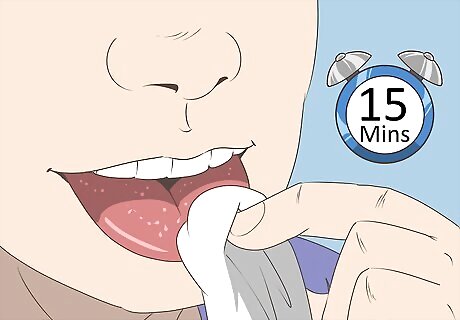
Keep steady pressure on your tongue for 15 minutes. Do not let go of whatever material you’ve put on your wound for a minimum of 15 minutes. Use your watch or a clock to make sure you’ve keep constant pressure for a full 15 minutes. Do not be tempted to lift the material up to check if the wound is still bleeding. If blood soaks completely through the material you’re using, apply another piece of material on top of the existing one without removing it (or decreasing pressure). Most mild bleeding will slow down significantly after 15 minutes, but the wound may still continue to bleed lightly for another 45 minutes. If the wound is still bleeding profusely after 15 minutes, call 911 or go to the emergency room. Avoid exercising for several days after your accident. Exercising, or exerting yourself, raises your blood pressure and can cause the wound to start bleeding again.
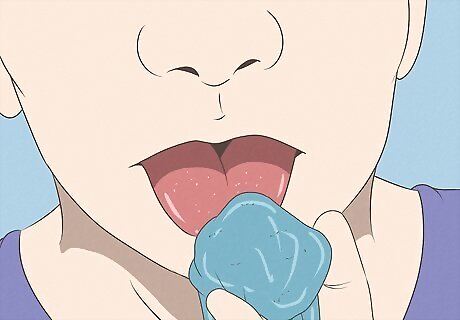
Reduce pain and swelling with ice. Granted, under the circumstances, the last thing you may want to do is put ice in your mouth, but it does help. Instead of ice, you can also use a cold compress (e.g. a clean face cloth run under cold water). For ice, you can use it two different ways. One way is to simply suck on an ice cube or ice chips. Another way is to wrap the ice in a thin (clean) cloth and apply the cloth to the wound on your tongue. Use the ice or cold compress method for one to three minutes at a time, six to ten times per day, for at least the first day. Ice, or cold, will not only reduce swelling and stop any additional bleeding, it will help reduce the amount of pain you feel. You can also use a popsicle or something similar in lieu of ice if you prefer.
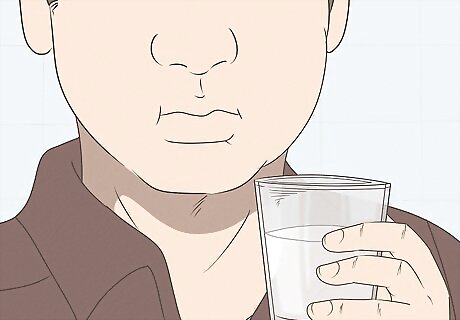
Rinse regularly with salt water. Mix up a solution of salt water using 1 teaspoon of salt for every cup of water. Use the salt water solution to rinse out your mouth by swishing the water around inside your mouth, then spitting it out. Don’t swallow the salt water. Don’t start the salt water rinse until the day after your injury. Use the salt water solution at least after each time you eat, but up to four to six times a day.
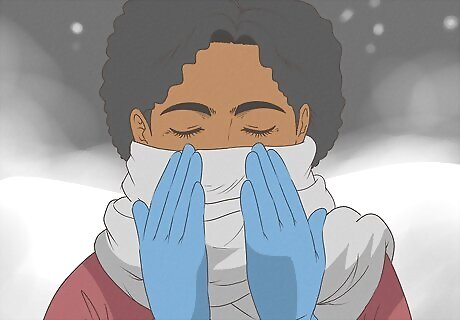
Protect yourself from the cold. While your tongue (or lips) are healing, you may be more susceptible to frostbite or chilblains (skin sores or bumps) in those areas. Protect yourself from the cold with a scarf, gloves, or balaclava to cover your face while you heal.
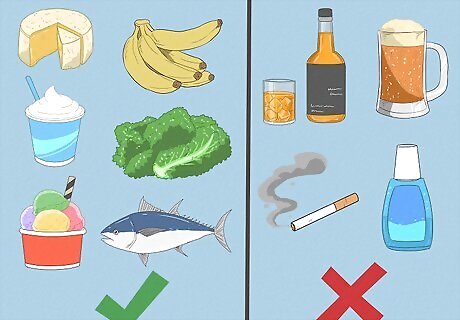
Be careful of what you eat. Your tongue and mouth will not only be sore, but most likely quite sensitive. Try to eat only soft foods that are gentle on your mouth at first. Avoid any foods that are salty, spicy or have a high level of acid, as these may be painful to eat. Foods to consider eating are: milk shakes, yogurt, ice cream, cottage cheese, eggs, tuna, smooth peanut butter, and well-cooked or canned vegetables and fruits. Do NOT smoke or drink alcohol while your tongue is healing. You may wish to avoid mouthwash that contains alcohol while you’re tongue is healing, as that may sting quite a bit.
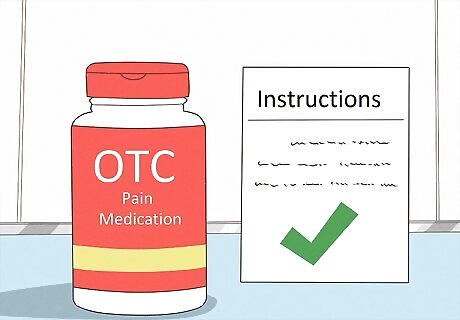
Take medications if needed. If you have gone to see a doctor, they will advise what medications you should or can take. Follow their instructions explicitly. If the injury wasn’t serious enough to see a doctor, you can consider taking over-the-counter pain medications to help reduce any discomfort. Over-the-counter pain medications that may work would include acetaminophen (i.e. Tylenol), ibuprofen (i.e. Advil) or naproxen (i.e. Aleve). The generic and brand name versions of all these medications are readily available in any pharmacy and most grocery stores. Always follow the instructions on the package for over-the-counter medication, and speak to your pharmacist if you have any questions. If you are pregnant, or might be pregnant, do not take ibuprofen or naproxen.

Know when to see a doctor. If one or more of the following things occur, consider going to your doctor as soon as possible to have your wound checked: If the pain from your wound increases over time, instead of getting better If your tongue, or other parts of your mouth, start to swell If you develop a fever If you have trouble breathing If the wound won’t stop bleeding, or opens up and starts bleeding profusely again










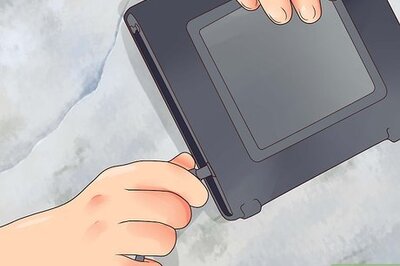
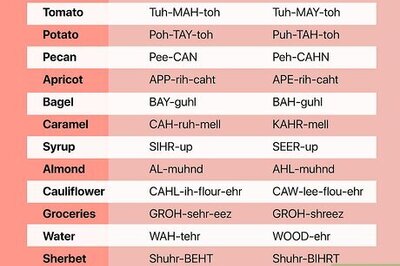



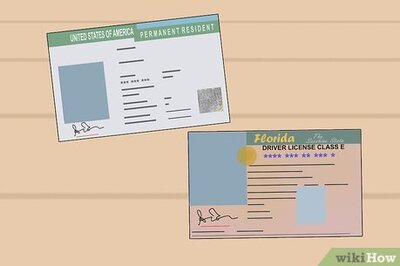


Comments
0 comment